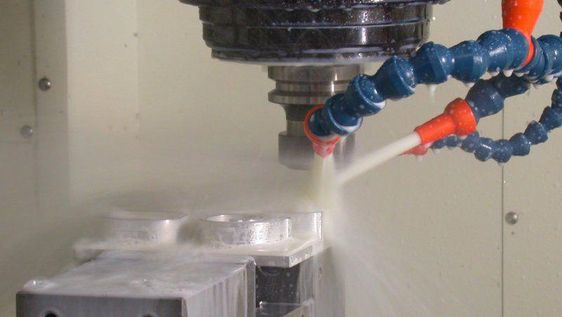A milling machine is a piece of equipment used to cut metals and produce parts with diverse shapes and sizes. Working a milling machine requires learning a few things to do things right. Modern milling machines are not that complicated to operate, but they have a lot of moving parts that work in conjunction with one another. You can get a machined if you know what you are doing and if you have an understanding of the machine and how it works.
To put in practice the advice found in these lines, you need to know ahead that safety is one of the primary concerns when you work any CNC machining process. Even if you are planning to practice on a small piece, you should wear the proper protective gear required for these tasks. A quick Google search will reveal what you need, but to keep things more straightforward try to gear up with protective glasses, gauntlets and the specialized aprons used by trainees.

cnc milling machines*
The Working Principles of a Milling Machine
Before we dive in the details of the things you need to know to operate a milling machine, you need to understand the working principles behind this piece of technology. Most of the great secrets are tied to the workpiece and our aptitudes to handle it properly. Keep in mind that even if a precision machine does most of the process, you still need to have some understanding of how to handle the material you are using. Otherwise, you will end up losing time and money.
Start by holding the workpiece firmly on the worktable of the machine. The way you feed the workpiece to the rotating cutter will be handled after a little adjustment of the working table. The rotating cutter works at high speeds, and it has to be attached to an arbor or a spindle. The sole motion of the cutter should do rotations and nothing else by this point. After you are set, you have to move the workpiece very slowly. The metal on the surface will be removed by the serrated end of cutter to achieve the desired shape.
This is How a Milling Machine Works
With the working principles on your hands, now you can go and experience your first-ever milling task. Keep in mind that the information we have offered so far is the basics 101 on milling machines. This is a condensed version of the training received by most technicians in the field. Even with this knowledge at their hands, it takes a lot of practice to get things done and find the right pulse you need to work a milling machine the way it’s meant to work. Now follow these steps:
1. Get a Basic Set-Up
Right before you start a milling task, you need to handle one of the most important parts of the job. To get the best set up possible, you will have to adjust the cutting tool to the arbor. The arbor should also be attached to the spindle.
2. Adjust the Knees
In this step, you will have to adjust the knee position by moving it downwards until it is placed where it feels right.
3. Clamp the Workpiece
This is the first time you deal with the workpiece. If you managed to do a basic set-up the way it’s supposed to go, you have to place the workpiece on the table. Try using clamping screws to handle this step more efficiently.
4. Check for Zero Adjustment
Before you begin the milling process, you need to make sure that every controlling point in the milling machine is set to zero. Check the saddle position, the knee position, and every single counter on the device to make sure it complies. This will help your work be more precise.
5. Get the Cutting Tool Rotating
Now the fun part begins! After the spindle starts to rotate, the cutting tool that is attached to it should begin to turn too.
6. Move the Workpiece
With the cutting tool rotating at high speeds is time to handle the workpiece. Remember to use all the parts of the machine. The table, the knee, and saddle are required to move workpiece. Do it as slowly as you can if this is your first time.
7. Shape the Workpiece
When the task is about to be finished, you can begin to move the workpiece using the controlling axis to cut the excesses and shape the metal part the ways is meant to. The tool will stay in rotary motion and remain stationary until the job is finished.
Remember that the main purpose of a milling machine is to increase the productivity of any manufacturing operation. This technology improves even the best logistics since it’s beneficial and time-saving. The best machined parts still have a little human touch. That’s why the work of these technicians should never be overlooked.
Reference
*Image from on https://hackaday.com
